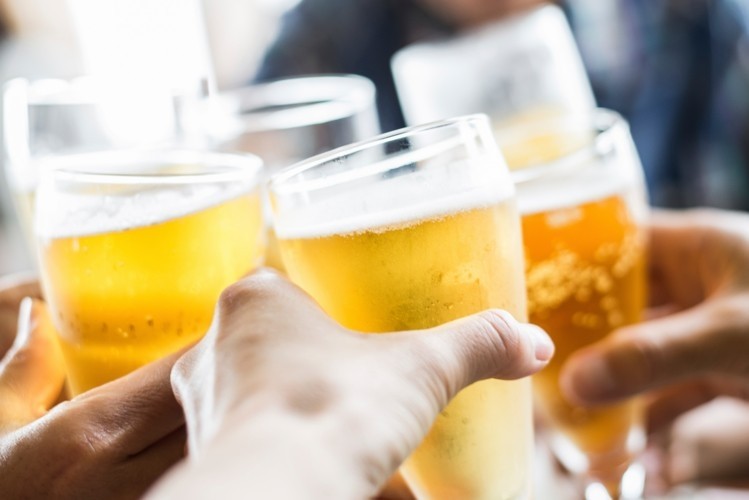What - exactly - is ‘alcohol free’?

The UK’s regulations on low alcohol descriptors will be replaced in December 2018, and the government is consulting on whether the current descriptors for no and low alcohol drinks should be maintained or changed.
With the rise in popularity of such drinks, it wants to help consumers make informed choices about what they are drinking and promote the availability of lower strength drinks.
0.05%: creating confusion or clarification?
The popularity and sales of low and no alcoholic drinks is on the rise with a 20.5% increase in sales over the last 12 months. Driven by increased interest in health and wellness, a number of consumers are trying to reduce their alcohol intake or calorie consumption.
Current UK Food Labelling regulations (in place since 2009)
• Low alcohol – product must be 1.2% ABV or below;
• Non-alcoholic – cannot be used in conjunction with a name associated with an alcoholic drink except for communion or sacramental wine;
• Alcohol-free – product must be 0.05% abv or below;
• De-alcoholised – product must be 0.5% abv or lower.
In the UK, an ‘alcohol-free’ drink must be 0.05% ABV or below, while one that is 0.5% ABV is classed as ‘de-alcoholised’. In Europe, however, the term alcohol-free can be used with any product under 0.5% ABV (as is also the case in the US among others).
Some drinks producers are calling for the UK’s definition of ‘alcohol-free’ to be raised to 0.5% to remove confusion for consumers and give UK producers a fair playing field (imports at 0.5% ABV can be labelled as alcohol-free while those produced in the UK cannot and must instead use the term ‘low alcohol’ or ‘de-alcoholised’).
However, others want to retain the distinction for beers that are 0.05% or under: saying that calling a drink with 0.5% alcohol alcohol-free is “a bit like giving a vegetarian a salad with some ‘thinly cut ham’.”
Debate brewing
St Peter’s Brewery, which is based in Suffolk, has spent time and money producing 0.0% ABV beer - ‘truly alcohol-free beer’ - and says that this is a distinction that should be maintained.
Steve Magnall, CEO, St Peter’s Brewery, said the issue is around transparency. "Discussions around labelling 0.5% as zero alcohol are a problem, both ethically and for health reasons,” he said. “Describing a drink that contains 0.5% alcohol as zero alcohol is firstly incorrect, secondly misleading and, frankly, downright dangerous.
“I've worked with alcohol awareness charities in the past and seen the damage alcohol can do. For those who can't drink for personal reasons, or indeed health reasons, the possibility of consuming a drink that falsely claims it contains zero alcohol could have terrible implications for those who are vulnerable.
“If labelling is being changed we need clarity, not false statement. Its common sense; the public should be given all the information to make an informed choice whether it be for health, medical or addiction reason.”
However, Infinite Session, which produces 0.5% ABV beers, disagrees. Its brewers point to research which says that 0.5% beer has ‘no physiological effect’ on the body. Furthermore, it points out that many foods contain small amounts of alcohol - fresh fruit, bread, cakes, pastries, vinegar, soy sauce and yogurt can contain up to 0.5% alcohol.
Co-founder Chris Hannaway said: “At present in the UK, to be “Alcohol-Free” the beer should be 0.05% ABV or below. On the contrary, products from the EU (and beyond) below 0.5% can be labelled “alcohol-free” and distributed in the UK. Confusing.
“Research from the University of Freiburg has shown that 0.5% beer has “no physiological” effect on the body and is safe for drivers and during pregnancy. UK duty and licensing laws both treat alcoholic beverages as being above 0.5%.
“In brewing to 0.5%, we can avoid stripping the vital flavour and aroma out of the product that makes an “alcohol-free” beer more desirable. And by expanding the appeal of alcohol-free beers, we can help consumers make healthier choices that remove alcohol and calories from their diets.”
Have your say: consultation closes this week
The Low Alcohol Descriptors consultation asks respondents for their opinions on a number of issues.
The definition of ‘low alcohol’ currently applies to drinks under 1.2% ABV, but the consultation asks whether this limit should be changed or whether other drink descriptors should be applied to drinks above 1.2%. It also asks whether the descriptor ‘de-alcoholised’ should be kept.
The consultation can be found here.





